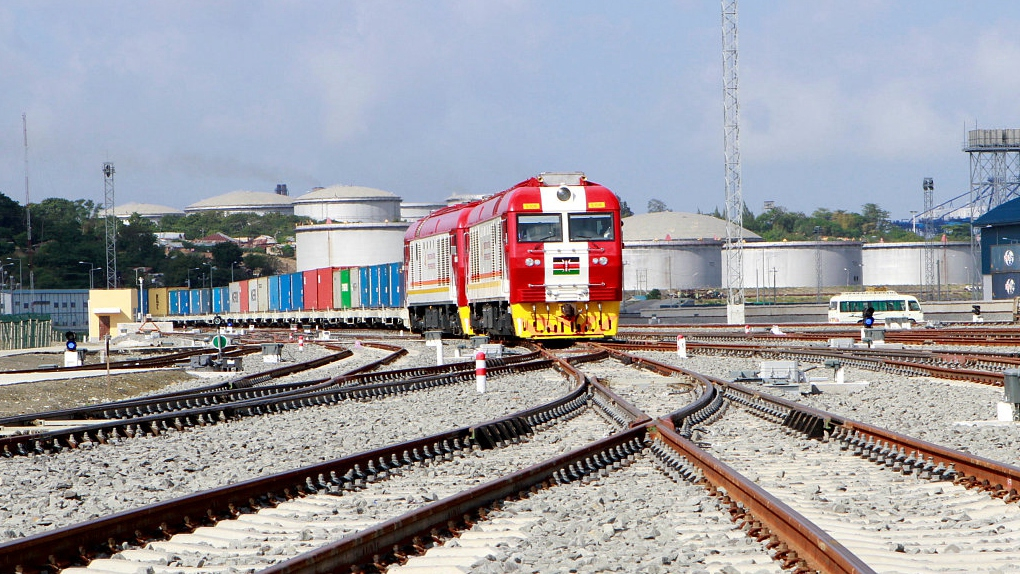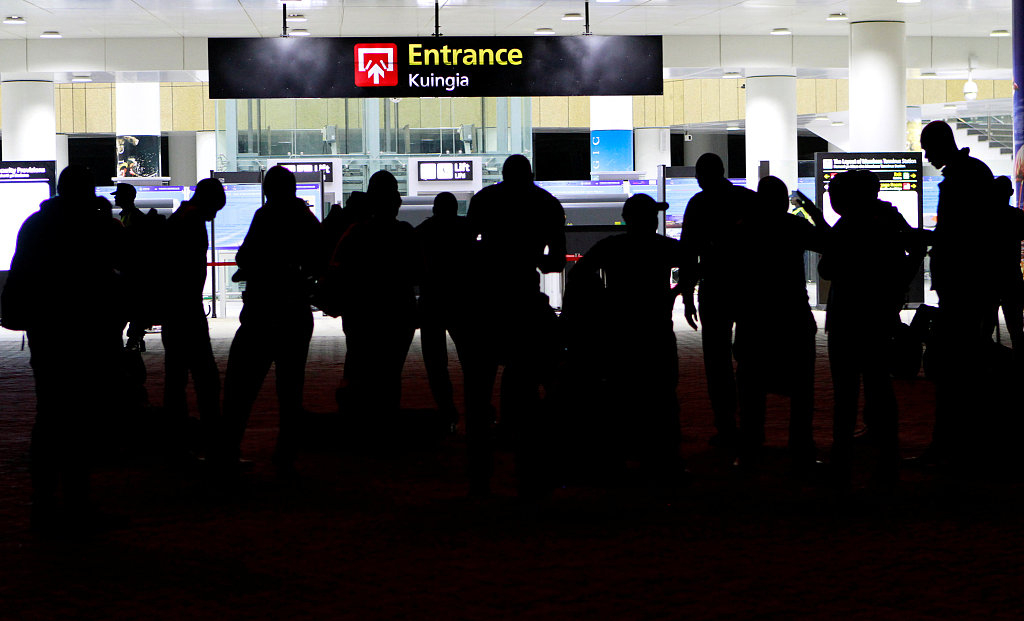
A cargo train is launched to operate on the Standard Gauge Railway (SGR) line constructed by the China Road and Bridge Corporation (CRBC), May 30, 2017. /VCG Photo
A cargo train is launched to operate on the Standard Gauge Railway (SGR) line constructed by the China Road and Bridge Corporation (CRBC), May 30, 2017. /VCG Photo
Editor's note: Stephen Ndegwa is a communication specialist, writer and analyst on China-Africa affairs. The article reflects the author's opinions, and not necessarily the views of CGTN.
The skyline of Kenya's capital, Nairobi, is bound to change forever in the next couple of years, after President Uhuru Kenyatta launched the Jomo Kenyatta International Airport (JKIA)-Westlands expressway on October 16.
According to the agreement, China Road and Bridge Corporation (CRBC) has a 30-year concession to construct and operate the road.
The road aims at expediting the flow of traffic to and from JKIA, over the Nairobi Central Business District (CBD). The construction entails expansion of the existing road to four one-way lanes, bringing the total number to eight lanes. This infrastructure marvel will also have with foot paths, drainage channels, overpass bridges and street lighting.
Indeed, pundits have noted that the road is a first in Africa, with features underpasses, overpasses, exits and the so-called Bus Rapid Transit component covering the entire stretch.
Congestion in Nairobi CBD will be eased, while there's hope there'll be less delays at the airport. Over the years, hundreds of people have missed their flights while stuck in road traffic jams on the city's streets, as they make their way to the airport.
The new ultra-modern highway, whose construction is expected to finish in 2021, has come at a time when Kenyans are desperate for solutions due to the inordinately long hours needed to cross through the city from either end.
According to a report released in September this year by the Nairobi Metropolitan Authority, traffic jams in Nairobi are estimated to cost the Kenyan economy one billion U.S. dollars every year. This translates to about 107,000 U.S. dollars per hour.
According to local official data, Nairobi loses 500,000 U.S. dollars in productivity per day because of traffic jams. In 2014, Bloomberg placed this waste at about 570,000 every day in terms of fuel and wasted productivity.

Passenger train attendants are silhouetted at the entrance area of the newly constructed Mombasa terminal of the Standard Gauge Railway (SGR) line constructed by the China Road and Bridge Corporation (CRBC), May 29, 2017. /VCG Photo
Passenger train attendants are silhouetted at the entrance area of the newly constructed Mombasa terminal of the Standard Gauge Railway (SGR) line constructed by the China Road and Bridge Corporation (CRBC), May 29, 2017. /VCG Photo
Traffic congestion in Nairobi takes place in two ways. First is the regular cycle which Kenyans are accustomed to. This is caused by peak hour traffic, poor infrastructure, accidents, and variable traffic speeds on congested roads.
It has a direct impact on the profitability of the workforce, who spend an inordinately long time sitting in moving traffic on a daily basis. Overly slow traffic increases the costs of goods, while the car fumes increase the carbon footprint on the environment.
According to a study released by researcher Willem van Waas, Nairobi was the second most congested city in the world in 2018, after Kolkata in India, with 40.6 percent of residents using public transport to work.
But Nairobi is not in a unique dilemma. Growing urbanization is global phenomenon. This development has inevitably constrained the infrastructure of many mega cities, leading to the search for efficient solutions to improve urban transport systems, and reduce traffic congestion. The expressway has been integrated with the rest of the city's transport system in order to ease access to JKIA.
For over a decade now, Kenya has built thousands of kilometers of roads owing to an exponential increase in budgetary allocations for infrastructure development at both the national and county government level. And a lot of credit has gone to road construction firms from China, whose dominance has been attributed to a track record of quality work and expeditious delivery.
Besides, Chinese construction companies are also building capacity of local companies, by creating synergies in the construction value chain. In September, 2018, Nairobi-based Rhombus Construction Company signed a deal worth approximately 48.5 million U.S. dollars with Chinese equipment manufacturer, SANY Group.
In the new Chinese spirit of "high speed, high quality," Kenya is fast becoming China ready. Indeed, some of the road arteries form part of the global Belt and Road Initiative, which is going to be an international trade game changer. China has continued to live up to its billing as, not just Kenya's, but also Africa's, best friend.
(If you want to contribute and have specific expertise, please contact us at opinions@cgtn.com.)